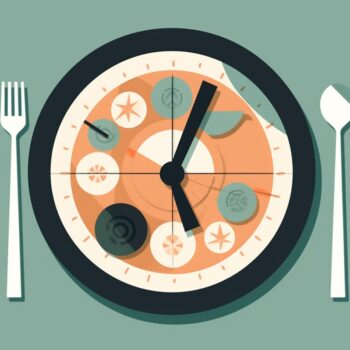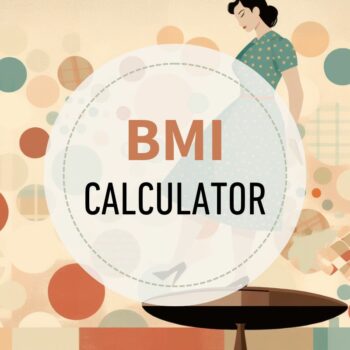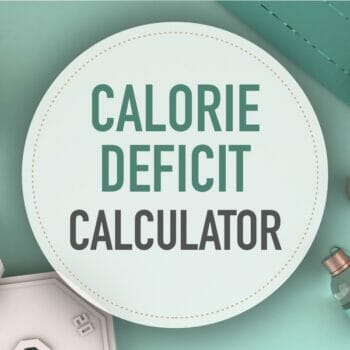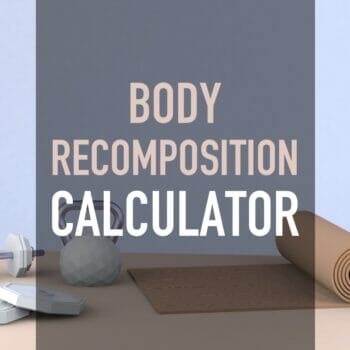Macro Calculator
This free, easy-to-use macro calculator gives you your optimal macronutrients and calories. It’s a weight loss or muscle gain calculator for both women and men.
Combine with macro counting or flexible dieting to reach your goals faster.
Now what do I do with my macros?
Our comprehensive macro-based fat loss program shows you what to do. Learn more
How do macros work?
The foods we eat are made up of three macros (macronutrients). These are carbohydrates (carbs), protein, and fat.
Chicken is high in protein but has no carbs; rice is high in carbs but has very little fat or protein. The three macronutrients provide the body with energy and raw materials for growth and repair.
By calculating the appropriate daily calorie amount for you, we can then break this down into the best macronutrient ratios to achieve weight loss.
Basic steps for macro counting
- Enter details into the calculator
Make sure to choose the correct goal. - Take note of your calories and macros
These will be the targets you are aiming for each day. - Track your macros
Use an app or pre-plan your meals. - Measure results
Don’t use basic weight scales.
Use proper body composition scales (we recommend Renpho) to measure fat and muscle mass changes.
What is a good macro ratio for fat loss or muscle gain?
Your macros should be based on your Total Daily Energy Expenditure (TDEE) and goals.
The calculator defaults to the best macro ratio proven to work for most people.
This ratio is:
- 30% fat
- Protein is 0.65 grams per pound of body weight,
- The remainder is carbs.
Depending on your goal, this will be either a calorie deficit or a surplus.
You can go further and make more adjustments: Perhaps you’re an extreme endomorph and do better with fewer carbs. Or perhaps you have one kidney and need to eat less protein.
You can fine-tune your results with a bit of math. See how to change your macros here.
What is a good protein ratio?
Rather than a percentage, proteins are based on your body weight. Our calculator has three settings:
- Moderate adjusts the ratio to 0.65 grams per pound of body weight.
This is appropriate for sedentary individuals or people with higher body fat percentages. - High is for active people with moderate strength training and an average body fat percentage.
- Maximum will set the ratio to 1 gram per pound.
This amount is good for bodybuilding and gaining muscle mass. You must be doing intense training.
Find out how to fine-tune your protein ratios when counting macros
Fat macro ratio
Set fat at 30% of daily energy expenditure.
Most people do very well with this amount of fat. See more about choosing the best macro fats. Because of high-fat diets like keto, many people are now eating more fat than they need to.
Carbohydrate macro ratio
Once you’ve calculated protein and fat, the remainder of your daily calories should be from carbohydrates.
Carbs fuel your body and workouts – and are the body’s preferred energy source.
If you come from a low-carb background, this may seem high. However, according to respected nutritional research, this is a moderate amount of carbs.
If you are eating according to your TDEE, the notion that carbs cause weight gain or stop fat loss is incorrect.
Using as a Calorie Deficit Calculator
As a weight loss calculator, this tool establishes a safe calorie deficit only.
The Lose option puts you in a 20% calorie deficit, promoting safe, steady weight loss.
The best macro ratio for body recomposition
If you want to recompose your body (lose fat and gain muscle simultaneously), then use the body recomposition calculator.
Macro ratio for maintenance
The Maintain button shows you the macro levels to maintain your current weight.
This is great if you have lost weight and don’t want to gain it back.
Macro ratio for muscle gain
The Gain button puts you in a 20% calorie surplus.
The macro breakdown is designed to build muscle fast in conjunction and must be combined with a comprehensive weight training program.
Underweight people can also use it.
TIP: Try starting with the maintenance goal and gradually increasing calories if you want lean muscle gains.
Calculating macros using your body fat percentage
The calculator uses your body weight to determine calories and macros.
However, you can obtain superior results by using your body fat percentage. The calculator allows you to choose which method: Normal for body weight, Lean Mass for fat percentage.
When to choose the Lean Mass Formula
If you are lean (have a low body fat percentage), choose the Lean Mass formula and enter your body fat %.
If you are classified as obese and have a lot of weight to lose, the lean mass formula is superior. You can read more about macro counting and obesity.
Help? Calculate your ideal body weight or get an assessment of your body fat percentage.
Why the difference? Muscle cells burn more calories than fat cells, so the more accurately we measure this, the better your results will be.
How to calculate macros per meal
You can break this down into meals once you’ve calculated your daily macros in the calculator.
Choose from 2 to 6 meals daily to see the macro ratio you can track for each meal. For some people, this is easier, but for others, this is too much detail.
Do what works for you.
Meal Plans
See a 5-day macro-based meal plan. It includes three meals and two snacks per day.
Macro calculator activity level settings
A higher activity level means a higher daily calorie goal.
For example – if you maintain your weight at 2,000 calories per day, adding vigorous daily exercise means you need more calories to maintain your weight.
If you are sedentary and trying to lose weight, adding exercise will increase your daily calorie goal.
Although it seems counterintuitive, more energy is required to fuel workouts. More workouts lead to an increasing metabolism, which in turn burns more fat!
Undereating is one of the leading causes of the weight loss plateau.
So many of our clients previously “hit the wall” with dieting. They would continually reduce calories, stop losing fat, and gain weight when they eat a little more.
Macro counting defeats this by prescribing the right food and calorie levels.
Which activity level do I choose?
- Sedentary: Just regular everyday activity like a bit of walking, a couple of flights of stairs, eating, etc.
- Light: Any activity that burns 200-400 calories (females) or 250-500 calories (males) over your sedentary amount.
- Moderate: Any activity that burns 400-650 calories (females) or 500-800 calories (males) more than your sedentary amount.
- Extreme: Any activity that burns more than 650 calories (females) or more than 800 calories (males) in addition to your sedentary amount.
Other options for determining your calorie burn
- Use our calories burned calculator – it accurately assesses over 380 activities.
- Use a fitness tracker such as a Fitbit or Apple Watch (note that they can overestimate calorie burn).
Why should I eat more when I exercise more?
High physical activity not fueled with enough calories will lead to muscle catabolism (breakdown of muscle fiber).
This lack of nutrition could stall your weight loss, so eat up if you love to exercise!
I’ve got my macros – now what?
Once you’ve identified your target daily macros, you must determine the macros in all your foods.
By tracking them daily, you can reach your recommended macro targets that encourage fat loss, muscle gain, or whatever your goal may be.
You can learn more about the macro counting system and the flexible dieting philosophy. Many people use a diet tracking app to help them stick to macro targets.
For more specifics on what to eat – see a sample macro meal plan or a list of macros for familiar foods.
View article sourcesSources
- Mifflin, M. D., St Jeor, S. T., Hill, L. A., Scott, B. J., Daugherty, S. A., & Koh, Y. O. (1990). A new predictive equation for resting energy expenditure in healthy individuals. The American Journal of Clinical Nutrition, 51 (2), 241-247. Link
- McArdle, W. D., Katch, F. I., & Katch, V. L. (2010). Exercise physiology: nutrition, energy, and human performance. Lippincott Williams & Wilkins. Link
- Jequier, E. (1994). Carbohydrates as a source of energy. The American journal of clinical nutrition, 59(3), 682S-685S.
- Lemon, P. W., Tarnopolsky, M. A., MacDougall, J. D., & Atkinson, S. A. (1992). Protein requirements and muscle mass/strength changes during intensive training in novice bodybuilders. Journal of Applied Physiology, 73(2), 767-775. study abstract link
- Grundy, S. M. (1999). The optimal ratio of fat-to-carbohydrate in the diet. Annual review of nutrition, 19(1), 325-341. abstract
- Conlin, L.A., Aguilar, D.T., Rogers, G.E. et al. Flexible vs. rigid dieting in resistance-trained individuals seeking to optimize their physiques: A randomized controlled trial. J Int Soc Sports Nutr 18, 52 (2021). https://doi.org/10.1186/s12970-021-00452-2
2,106 Comments


 Menopause Macro Calculator
Menopause Macro Calculator Intermittent Fasting Calculator
Intermittent Fasting Calculator BMI Calculator
BMI Calculator Calorie Deficit Calculator
Calorie Deficit Calculator Body Recomposition Calculator
Body Recomposition Calculator
wow this was so helpful. I’ve been very active but was always intimidated to count macros. I’m new to this but and want to optimize my diet to help accomplish my fitness goals!
Hi Jennifer, So glad this calculator was helpful. All the best with your goals!
Quick question, is this calculating net carbs or all carbs??
Hi Cynthia, The calculator is showing total carbs because it can be hard to find the net carb info for some foods you are tracking and it isn’t always accurate. You can track total carbs and then use your fiber intake as a buffer or a way to eat more carbs if your fiber intake is high. About 60-70% of fiber isn’t providing calories.
Hi I’m Angie I’m 53 disabled but weigh 319 lbs. I walk but have to quit cause then my hip and back start hurting. Help please!!!
Hi Angie, Luckily, counting macros is a great weight-loss method for those that have to be sedentary. However, since you have more than 100 pounds to lose my calculator won’t give you an accurate weight loss TDEE. Please see my article here: Determining Macros for Obese Individuals
Hi Ted,
I’m 43, 95kgs at 6’2″ exercise average 10hrs per week and want to lose 8-10kgs but also I’m keen to maintain muscle mass whilst trimming up. I’ve used the calculator and it says Carbs 222g, Protein 78g and 57g of fat. But are these figures based upon shear weight loss and not maintaining muscle mass?
Any advice would be gratefully received.
Hi Doug, Thanks for stopping by. The calculator uses a 20% deficit which is considered safe meaning that your muscle tissue should stay strong throughout the process as long as you’re keeping up with your workouts, of course.
Hi! My name is Ashley, I’m a 36 y.o. female wanting to lose about 20lbs. I currently weigh 165. I have a sedentary job requiring me to sit at least 8 hrs a day. I do try to workout at least 5 times a week. I like cardio but also try to get in weights. The calculation has me at 1568 cals/day, c 167g, p 107g, f 52g. I just want to know if this sounds appropriate for my goal!
Thank you so much!
Hi Ashley, It could be. How long is your workout? You should also calculate a sedentary set for the 3 days per week that you don’t exercise since your energy needs are different on those days.
Hello everyone!
I am a sedentary worker at my job. I am almost 29 years old and a female. I believe that I am an endomorph because of my great ability to gain weight just by thinking of food. (I’m kidding). I am currently 267lbs and 5’3″. What would be the best way for me to capture my caloric intake and macros to lose 100lbs?
Thank you!
Hi Micah, If you have a lot of weight to lose, traditional calculations like the ones used in the calculator aren’t optimal because fat tissue will skew the numbers if you have more than 40 pounds. Therefore, the best option would be to have your calculations done by an expert and who could also recommend ways to get some movement in throughout your week. You can check out my coaching page if you’re interested in some help with this. Personalized Macros Coaching
Im really confused mine says i need 2121 calories a day, it gives me total grams of carb protein and fat per meal, and when i add up all this it doesnt get close to 2121 calories a day, i need help, im really confused about the carb protein and fat grams per meal to 2121 calories a day it just doesnt sum up
Hi Gireth, This article gives you a little more detail on the calculations as well as how many calories each macro delivers. How to Calculate Your Macros to Transform Your Body
Thank you
Let’s say it’s set for 1800 cals (to lose 10%) and has the macros set. When I burn 600 cals during a workout do I need to take in more than the 1800 cals& macros? I’m 5ft 4, 148 # and just want to get back to at leaat 140. 138 would b great. Getting back into workouts and trying to lean up post injuries this summer.. I usually do half ironmans and long rides in summer but not this summer bc everything canceled, no gyms open to lift heavy..I usually run hour or ride 30 to 40 miles. Or stepmill 45 to 60mins and weights at least 3 times i prefer 4 times a week.
Hi Sabrina, It’s been rough on all of us! Hang in there and glad you’re taking steps to get back on track. It depends on what you selected for the activity level. If you selected sedentary then yes you would add the 600 in for a workout day. If you selected “moderate” or “very active” then exercise calories have already been factored into the equation although it may not match exactly your specific burn.
I’m 65 sedentary and have my macros set at Cal 1500 , Protein 150, Fat 67, Carbs 75. I have about 30-40 lbs to lose and just received a glucose # of 103. Are my carbs set right?
Hi Rod, It looks like your carbs are a little low. 35-40% is better and make sure the carbs are from whole food sources. Eating healthier carbs and losing fat tissue will bring that fasting glucose number down.
Hi.. i am female 37, 155 cm and currently 64 kg. I used to workout 6 days a week. I don’t want to lose more weight. I want to maintain and tone my body. I want my muscles to be strong. Pls help me with a proper diet plan. Thnking u in advance.
Hi Raslam, You would use the calculator above and set it to “maintenence”. This will keep you at roughly the same weight with normal weight fluctuation considered.
Hello. I’m a 22 year old college student living in Korea. I’m here to find out information about carbs, protein, and fat percentages to bulk up to grow muscle size. I exercise about 6 times a week, and I exercise for 1 hour 30 minutes to 2 hours each time. I hope I can get good information.
Hi Jeon! See my page here which discusses that in more detail. Macros for Gaining Muscle and Cutting Fat